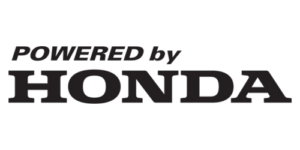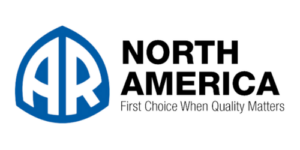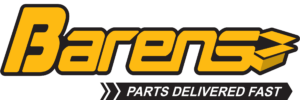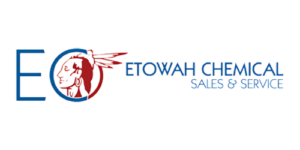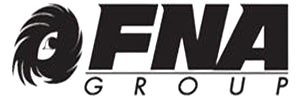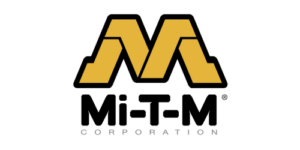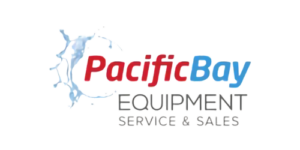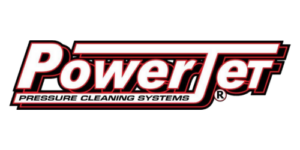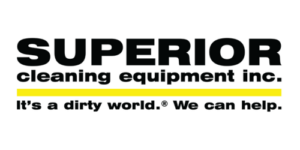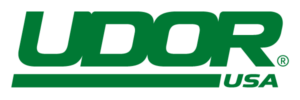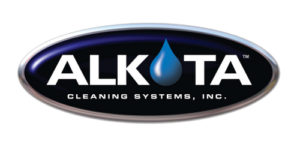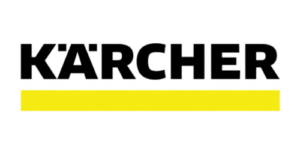Become a
CETA Member
Make plans to attend POWERCLEAN the premier trade show for the cleaning industry. Our annual CETA conference offers education, exhibitions, guest speakers, and amazing opportunities for networking with your industry peers.
What is CETA?
The Cleaning Equipment Trade Association is an international non-profit trade organization that represents the pressure cleaning industry. Our members include manufacturers, suppliers, distributors, and contractors. Find out more about our association here.
Our Vision:
CETA will be the top resource for distributors in the power cleaning products industry to get information to better their business, improve profitability, educate ownership and employees, and network to improve industry best practices.
Our Mission:
CETA is a non-profit organization providing networking, education, training and regulatory influence to enable profitable growth to distributors of power cleaning products in North America.
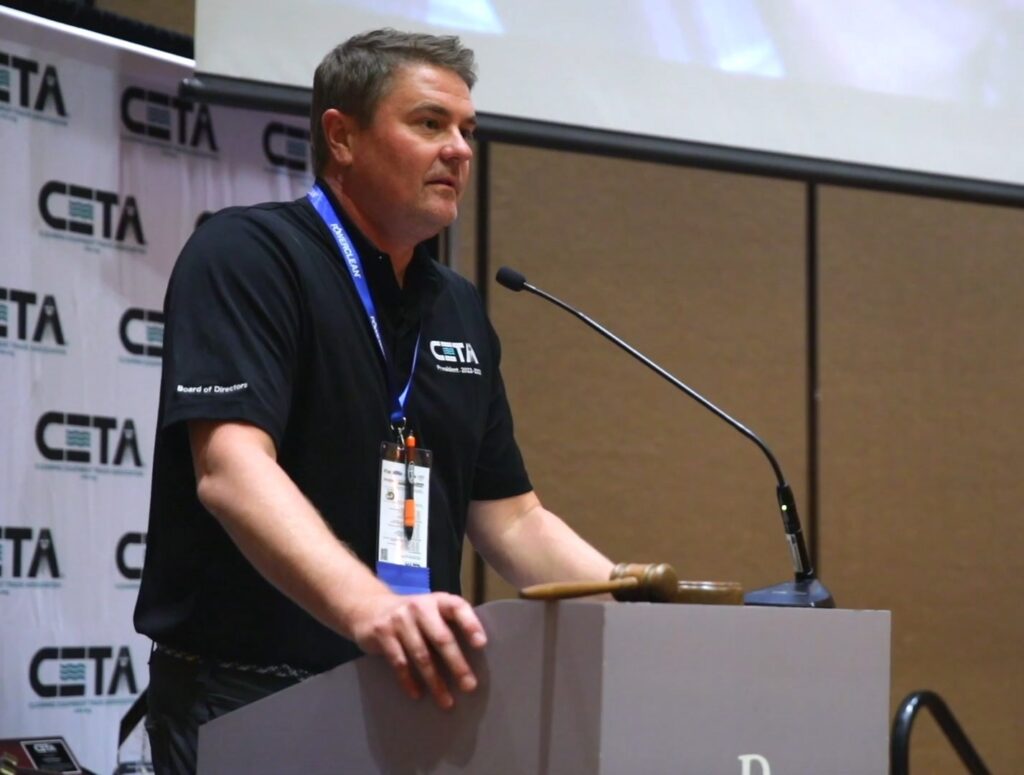
Benchmarking Sponsors
CETA Membership
Become Part of Your Industry
CETA provides solutions to distributors, suppliers, and manufacturers who must navigate changing markets. We will help differentiate you from your competition. In addition, we’ll boost your profitability and professionalism and keep you connected with our members.
Networking
Connect with a supportive community that offers networking opportunities with other CETA professionals
Special Access
Get access to CETA specific products and services that can keep you at the top of your field
Increase Profit
We share data & supply key indicators to help you develop a plan to increase your net profit by 10% or more
Why Attend
POWERCLEAN® 2025?
Awesome Giveaways
On the tradeshow floor manufacturers, suppliers, and distributors will be offering all sorts of giveaways. You never know what will be available from every day use items to full-on product giveaways. Check out the trade floor to see what you can get.
Member Only Event
As always POWERCLEAN® will be a member-only event. This will keep the event to only industry professionals so attendees don’t have to worry about wasted time or conversations. You’ll be connecting with industry leaders all week!
Outdoor Product Demos
Some of the top cleaning industry manufacturers will be showcasing new products that will be available. This lets dealers get a head start on what is coming up in the industry and make connections to offer their customers the best of the best.
Grow and Promote Your Business
Interested in offering a new line of products? Get all the information you need and more from leading manufacturers like Alkota, Karcher, Mi-T-M, and more. POWERCLEAN® 2025 is the place to go for everything you need.
Connect with Fellow Industry Experts
You won’t find a collection of more connected people in the cleaning industry than at POWERCLEAN® 2025. Make meaningful connections with people across the industry. Don’t miss out on countless opportunities to grow and expand your business.
Relax in Reno and
Make Connections
Enjoy a break from the normal day-to-day work in Reno while learning how to increase your profitability and sustainability. Our conference will include a golf outing, product demos, benchmarking, luncheons, and more!
Updates in the Cleaning Equipment Industry
UPDATE JANUARY 2025
Prop 65: Amendment of Short-Form Warning Requirements
On December 6, 2024, the California Office of Environmental Health Hazard Assessment (OEHHA) announced significant changes to the Proposition 65 “short-form” warning regulations. These amendments, which took effect on January 1, 2025, aim to make the warnings more informative for consumers while providing businesses with additional options and flexibility. Industries and companies producing, distributing, or selling products in California that may expose consumers to chemicals known to cause cancer, birth defects, or reproductive harm (>10 employees) are impacted.
Key changes include:
– Chemical Identification: Short-form warnings must now specify at least one Proposition 65-listed chemical for which the warning is being provided.
– Extended Implementation Period: Businesses have a three-year transition period, until January 1, 2028, to comply with the new short-form warning content requirements.
– Food Product Warnings: The amendments explicitly allow the use of short-form warnings for food products, with a specific hyperlink to www.P65Warnings.ca.gov/food.
– New Warning Options: Businesses can now use “CA WARNING” or “CALIFORNIA WARNING” in addition to the standard “WARNING” label.
– Retailer Accommodation: During the three-year implementation period, retailers have a 60-day grace period to update online short-form warnings after receiving notice from a manufacturer.
– Specialized Warnings: New tailored safe harbor warnings have been introduced for passenger or off-highway motor vehicle parts and recreational marine vessel parts. OEHHA determined that warnings for chemicals from these parts carry unique challenges and unpredictable exposures. A general warning for the parts, combined with a recommendation that consumers practice good industrial hygiene is now mandatory, even in the case that chemicals are not be accessible to consumers, for example, if the chemical is in an internal component to which the consumer may never be exposed. Requirements for Label content are defined in respective newly added articles. Note: “Passenger or off-highway motor vehicle part” means any part offered for sale or transferred to a consumer for installation in or service on a “passenger” or “off-highway motor vehicle”, but shall not include packaged service chemicals, tires, parts containing asbestos, carpeting, upholstery including fillings and coverings, textiles, or fabrics.
o Passenger vehicles are: Motor vehicles for person transport (including housecars)
o Off-highway motor vehicles: Includes motorcycles, snowmobiles, dune buggies, ATVs, and recreational off-highway vehicles. The scope refers only to those vehicles that are considered consumer products.
These changes reflect OEHHA’s efforts to address concerns about the overuse of short-form warnings and to ensure that consumers receive more specific information about potential chemical exposures. Businesses using Proposition 65 warnings should review these amendments carefully to ensure compliance by the 2028 deadline. For more detailed information, please visit the OEHHA website.
PFAS: Minnesota Takes Steps to Implement PFAS Reporting and Fee Rule
The Minnesota Pollution Control Agency (MPCA) is making significant strides in addressing the presence of per- and polyfluoroalkyl substances (PFAS) in consumer products. On November 18, 2024, the MPCA issued a request for comments on planned rules governing the reporting of PFAS in products and associated fees.
This initiative aims to establish a comprehensive program for collecting information about products containing intentionally added PFAS, as mandated by Minnesota Session Law – 2023, Chapter 60, H.F. No. 2310.
Under the new regulations, manufacturers of products sold, offered for sale, or distributed in Minnesota that contain intentionally added PFAS must submit detailed information to the MPCA by January 1, 2026. This information includes a brief product description (including UPC or SKU), the purpose of PFAS in the product and its components, the amount of each PFAS (identified by CAS RN), manufacturer contact information, and any additional information requested by the commissioner.
The reporting requirement is designed to be a one-time submission, with updates necessary only when there are significant changes or upon MPCA request. To cover implementation costs, the MPCA is authorized to establish fees payable upon reporting. The fee structure may be based on products reported, number of PFAS reported, and/or amounts of PFAS reported. The MPCA aims to have the final rules adopted by January 1, 2026.
Canada Unveils New Initiatives to Strengthen Environmental Protection
On October 5, 2024, the Government of Canada released three significant documents to implement the 2023 amendments to the Canadian Environmental Protection Act (CEPA). These documents included:
– Draft Implementation Framework for the Right to a Healthy Environment
– Proposed Watch List Approach
The Proposed Plan of Priorities outlined substances to be prioritized for assessment of toxicity or potential toxicity. It encompassed 14 specific substances and 18 chemical groups, including fluoropolymers, organic flame retardants, and 6PPD. Additionally, a new Watch List was introduced, featuring substances not currently classified as toxic but potentially concerning if exposure conditions change.
By June 2025 at the latest, Canada will publish a final Plan of Priorities that specifies:
– The substances to which priority should be given in assessing whether they are toxic or capable of becoming toxic.
– Activities or initiatives related to assessing, controlling, or otherwise managing the risks to the environment or human health posed by substances (particularly those of high risk).
– Activities or initiatives to promote the development and timely incorporation of scientifically justified alternative methods and strategies in the testing and assessment of substances to replace, reduce, or refine the use of vertebrate animals.
Companies operating in Canada should monitor substances on both the Priority and Watch Lists and prepare for potential future regulations. The government sought public input on these proposals until December 4, 2024, providing an opportunity for stakeholders to participate in the consultation process.
While no immediate action is required, these initiatives signal Canada’s strengthened approach to chemical management. Companies should stay informed about these developments and prepare for possible regulatory changes in the future.
UPDATE April, 25, 2023
In December 2021, the California Air Resources Board (CARB) approved a regulatory revision requiring most small off-road engines (SORE) sold in California on or after January 1, 2024 to be zero-emission. CARB classifies small off- road engines as spark-ignition engines which are 25 horsepower or less. These emission standards of zero will apply to engines used in all equipment types produced for sale in California, except generators and pressure washers. Emission standards for pressure washers will change from the existing standards starting in 2024, but not zero.
The CETA technical committee continues to monitor the information released by CARB and will have an update at the upcoming PowerClean Convention in October 11-14th in Glendale, AZ.
For more information visit. https://ww2.arb.ca.gov/our-work/programs/small-off-road-engines-sore
UPDATE April 18, 2022
CETA reply to CARB’s latest request for comment to amendments are posted at Public Comment item 16 CETA.
There were 19 comments made, the following provide good content:
10. Knott, Greg, Outdoor Power Equipment Institute
11. Olma, Robert, ANDREAS STIHL AG & Co, KG
13. Hanz, Patricia, Truck & Engine Manufacturers Association
Thanks,
Jimmy Welch – CETA Technical Chairman
R. Calvin Rasmussen – CETA SORE Committee Chairman
UPDATE March 30, 2022
On March 30, 2022 CARB sent CETA an email titled “Public Availability of Additional Documents and Information for the Proposed Amendments to the Small Off-Road Engine Regulations: Transition to Zero Emissions” which is the 15 Day Notice we have been waiting to receive.
The CETA Sore Committee was notified and will meet and review the seven amendments and prepare CETA’s reply before the April 14, 2022 deadline.
If you have any questions please contact the CETA office with them.
Thanks,
Jimmy Welch – CETA Technical Committee Chairman
R. Calvin Rasmussen – CETA SORE Committee Chairman
UPDATE MARCH 18, 2022
On Friday, March 18, 2022 Jimmy Welch attended the “Small Engine Rulemaking Association & Retail Stakeholder” monthly meeting hosted by Greg Knott of OPEI and the following are topics that were discussed.
1) Still waiting on CARB staff to issue the next 15 day notice for comment.
2) EPA is currently on phase 3 of emissions requirements. Historically they tend to follow CARB by a few years. Review of current EPA documents (2022-2026) their currently no mention for SORE at this time. At this time, California is the only state that can legally require higher emission requirements. CARB has hinted influencing EPA.
3) Since December 2021 several states have had OPE related bills introduced /Multistate-SmallEngineEmission-Bills-220311.pdf Bills 220311.pdf CO, GA, HI, MD, NJ, NY, RI, VA, WA).
The bills are generally bucketed as follows:
(1) gas-powered leaf blower ban
(2) “lawn care equipment” ban
(3) zero-emission rebate / incentive / tax programs. Generally, OPEI has been filing comments in opposition to bans if / when bills have a public hearing.
4) OPEI Emissions Information Link
https://www.opei.org/zero-emission-equipment/
The ZEE agenda is being heavily pushed.
*One approach is to start with local regulations banning hand held (Two-Cycle) engines/equipment like trimmers & blowers because of emissions as well as noise.
**This is successful because many people don’t like these products and battery-electric product is available.
*Another approach is state legislation.
**They want to include all IC engines/equipment including all lawn & garden products.
CETA represents it membership but needs all of its members to get involved at their local and state level to prevent pressure washers to prevent being lumped into legislation at the last minute.
Thanks,
Jimmy Welch
CETA Technical Committee Chairman
UPDATE DECEMBER 20, 2021
(See communication between Jimmy Welch, CETA Technical Chairman and Christorpher Dilbeck, CARB Board)
Hi Christopher,
Thanks for your clarification on the proposed emission standards for model years 2024 through 2027.
Looking forward to your responses to all comments received during the formal comment period and during the hearing as well as the modified text for 15-day public comment.
Thanks again for listening to our comments, concerns, and questions.
Sincerely,
Jimmy Welch
CETA Technical Committee Chairman
Hi Jimmy,
Thanks, again, for your engagement in this rulemaking and for your thoughtful comments. We will release modified text for a 15-day public comment period shortly. The proposed emission standards for model years 2024 through 2027 are in Tables II-1 and II-2 in the Staff Report. The proposed emission standards for model year 2028 and subsequent model year generators are zero. We proposed to include 15-day changes to subject pressure washers ≥ 225 cc to the same emission standards as generators of the same displacement (note a more stringent emission standard for > 825 cc engines than for 225-825 cc).
We will respond to all comments received during the formal comment period and during the hearing.
Compliant and CARB-certified engines with complete evaporative emission control systems can be installed after the date of production into equipment.
Table II-1. Current SORE exhaust emission standards and exhaust emission standards under the Proposed Amendments
| Displacement category | Current HC + NOx emission standard (g·kWh-1) |
Proposed HC + NOx emission standard[1] for MY 2024-2027 generators (g·kWh-1) |
Proposed HC + NOx emission standard for all other SORE for MYs 2024 and later (g·kWh-1) |
| < 50 cc | 50 | 6.0 | 0.00 |
| 50-80 cc, inclusive | 72 | 6.0 | 0.00 |
| > 80 cc – < 225 cc | 10.0 | 6.0 | 0.00 |
| 225-825 cc, inclusive | 8.0 | 3.0 | 0.00 |
| > 825 cc | 8.0 | 0.80 | 0.00 |
Table II-2. Current SORE evaporative emission standards and evaporative emission standards under the Proposed Amendments.
| Displacement category | Current diurnal emission standard (g·day-1) |
Proposed hot soak plus diurnal emission standard[2] for MY 2024-2027 generators (g·test-1) |
Proposed hot soak plus diurnal emission standard for all other SORE for MYs 2024 and later (g·test-1) |
| ≤ 80 cc | N/A | 0.50 | 0.00 |
| > 80 cc – < 225 cc except walk-behind mowers | 0.95 + 0.056 × nominal capacity (liters) | 0.60 | 0.00 |
| > 80 cc – < 225 cc walk-behind mowers | 1.0 | N/A | 0.00 |
| ≥ 225 cc | 1.20 + 0.056 × nominal capacity (liters) | 0.70 | 0.00 |
Christopher W. Dilbeck, Ph.D.
Manager, Testing and Certification Section
Monitoring and Laboratory Division
California Air Resources Board
Christopher.Dilbeck@arb.ca.gov
VOIP: (916) 720-2099
Desk: (916) 319-0106
Subject: CETA Thanks CARB STAFF & BOARD
Christopher,
Thank you for your phone call on Wednesday afternoon informing me that CARB Staff would be presenting to the CARB Board at the hearing for pressure washers to follow the generator time line for > 225 cc.
It was GREAT to see the presentation with this proposed revision.
Slide 26 from December 9, 2021 CARB Board Meeting

Thank you for listening to our comments and concerns.
Are these potential exhaust and evaporative standards the final decision?
Slide 29 from March 24, 2021 CARB Workshop Staff Presentation:
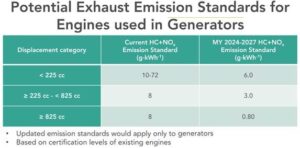
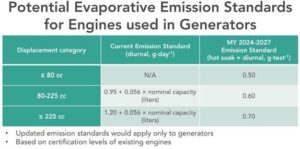
Summary:
- Engines will change for 2024 > 225 cc:
Emission HC+NOx 3.0 g-kWh-1 and Evaporative hot soak + diurnal, g-test-1 0.70
2. ZEE for 2028:
Set emission standards for generators to zero1 for Model Year 2028 and implement a zero-emission generator credit program
1 Emission standards of 0.00 g·kWh-1 (exhaust) and 0.00 g·test-1 (hot soak + diurnal)
During the hearing their were some questions about federal preempt equipment including pressure washers and staff answered it may be but will be looked into. Please keep us informed on this.
Please varify that the regulation is for the engine (produced and properly labeled) in stock can be installed on equipment after the date.
Looking forward to continuing to work with you and other staff members on market readiness.
Sincerely,
Jimmy Welch
CETA Technical Committee Chairman
UPDATE DECEMBER 15, 2021
*Clicking blue directs you to their website
We apologize for the delayed update, but we have a “WIN” and are still celebrating!
We would like to thank everyone that participated in this first “WIN” with the CARB SORE Staff & Board which allows engines > 225 cc produced after January 1, 2024, and sold for use on pressure washers into California to follow the same new reduced emission (exhaust & evaporative) regulations as generators till January 1, 2028 at which time ZEE will be required.
While we wait for CARB Staff to officially reply the following is a summary of the new reduced emission requirements:Engines will change for 2024 > 225 cc:
- Emission HC+NOx from 8 to 3.0 (Reduction of -5) g-kWh-1
- Evaporative diurnal, g-test-1 from 1.20 + 0.056 x normal capacity (liters) to hot soak + diurnal, g-test-1 to 0.70
- ZEE for 2028:
- Set emission standards to zero1 for Model Year 202
- 1 Emission standards of 0.00 g·kWh-1 (exhaust) and 0.00 g·test-1 (hot soak + diurnal)
NOTE: This is no easy task, and we need to continue to support our engine and equipment manufacturers as they work towards these aggressive reduction requirements.
During a Friday, December 3, 2021, meeting with CARB Staff we were able to express our concerns, comments, and questions with presentations from each of our member groups (Supplier, Manufacturer, Distributor, & Commercial Pressure Washer).
On Wednesday, December 8, 2021, CARB Staff contacted us to let us know they listened to our comments and decided to present to the Board for pressure washers > 225 cc to follow the same requirement for generators.
On Thursday, December 9, 2020, during the CARB Board meeting Staff presented their proposal, comments were heard, and the Board asked Staff to comment on numerous concerns before a vote was taken to approve Staff’s proposal.
As we know, as CARB introduces and passes more stringent emission regulations other states as well as federal (EPA) will follow so, please continue to support CETA in our efforts. In reality, this not only affects our current members all across North America but also non CETA members so, please join CETA and support our industry.
This is a “GREAT WIN” for our industry, and we would like to recognize our committee members and those who worked diligently throughout this process. A special thank you to those who testified on the industries behalf. Gregg Brodsky, Jim O’Connell, Michael Ricketts, Casey Meekler, Alan Bonifas, Eric Tower along with Jimmy Welch and myself. Furthermore, we would be remiss if we did not recognize Debbie Murray and Tracy Wagoner our awesome CETA Staff who continually goes above and beyond to keep us organized and on task.
The CETA SORE Committee and CETA Staff will continue to collaborate with the SORE Staff as there is still work to be done.
Sincerely,
R.Calvin Rasmussen & Jimmy Welch
CETA SORE & Technical Committees
UPDATE NOVEMBER 30, 2021
*Clicking blue directs you to their website
We would like to thank everyone that took the time to send in your comments. See below CETA’s response. You can click on Board Meeting Comments Log (ca.gov) to see responses. CETA is number 483. CETA is making preparations for the hearing set for December 9, 2021.
November 24, 2021
Dorothy Fibiger, Ph.D.
California Air Resources Board
1001 I Street
Sacramento, CA 95814
RE: Comments with respect to the “Public Hearing to Consider Proposed Amendments to the Small Off Road Engine Regulations: Transition to Zero Emissions”
Dear Ms. Fibiger,
The Cleaning Equipment Trade Association (CETA) is an international non-profit trade association made up of manufacturers, suppliers, distributors, contractors/end users, and associates. All these members coordinate efforts to promote public awareness, professionalism, industry-wide safety standards, and education for the advancement of the powered cleaning equipment industry. Environmental regulations and lobby efforts are not inside CETA’s regular scope of work, but we strive to educate our members to promote best practices across the industry.
From that perspective, we have been working to understand the Proposed Amendments related to Small Off-Road Equipment (SORE Amendments or Amendments). We appreciate the opportunity to meet and discuss the Amendments, as without a doubt, they will be incorporated to our industry’s best practices. CETA members are committed to environmental improvement and societal benefit. Many of our members in the State of California are engaged in and empowering contractors to control the spread of disease, combat aquatic invasive species (AIS), lower water usage, and extend the life of materials and structures in corrosive or oxidizing environments. CETA members in the State of California also adhere to state and municipal regulations for the propane burners often used with commercial pressure washers and water reclamation in accordance with the Clean Water Act. From a societal benefit standpoint, CETA members create jobs, supply an extremely low barrier to entrepreneurship, and beautify through cleaning the countless retail, recreation, and tourist attractions for which the State of California is world renowned.
The main tool for a mobile, commercial, cleaning contractor (mobile cleaner) is currently a high-pressure washer. In majority, these tools for these contractors are powered by an internal combustion engine between 225cc to 825cc, and often having a combustion heating element (burner) to increase the cleaning efficiency of the high-pressure stream of water. Comparable to commercial landscapers, mobile cleaners use this tool as a full-time job, typically 6 hours per workday and 200 days per annum.
In contrast to commercial landscapers, the number of mobile cleaners is significantly fewer and many commercial cleaners in California work at night. Many users enter the industry by buying a pressure washer powered by an internal combustion engine smaller than 225cc. The reason mobile cleaners select tools of this description is, high pressure increases the cleaning efficiency, lowers the time and water used, and there is high mobility from the equipment being light weight and compact. The higher the pressure of water, the more efficiently a contaminant is lifted from a surface, or an adhesion is broken requiring less water to loosen the contaminant without chemicals or solvents. From industry member data, the higher flow rates commonly shown in gallons per minute disproportionately lowers the amount of time it takes to clean. The net effect of this is not just increased productivity for the contractor, but also lower water usage. A simple example of this from industry data is that with all other factors being equal 2 GPM flow takes 15 minutes to clean a surface while a 4 GPM flow will take 5 min resulting in a 33% lower water consumption. As an industry best practice, commercial cleaners find the increased efficiency and choose pressure washers greater than 3000 PSI and with flows greater than 3 GPM. The vast majority of units used by mobile cleaners is actually closer to 4000 PSI and 4 GPM, but for the sake of illustration, the 3000 PSI at 3 GPM product will be discussed in more detail. As an example of this difference, a common usage for high pressure washers by municipalities in California is to remove graffiti. This is done whether the municipality buys the pressure washer or contracts with a mobile cleaner. Industry experience shows 4000 PSI will remove graffiti, but 3000 PSI will not.
As said previously, CETA is committed to environmental improvement. Our members’ focus on meeting local propane consumption requirements proves our dedication to improved air quality. While reviewing the Initial Statement of Reasons (ISOR) for the proposed amendments, our membership has expressed detailed concerns which CETA would like to discuss. We look forward to some solution to continue helping the society of California.
About the Proposed Amendments, the main concern is the inability for mobile cleaners to source the main tool used by themselves, their employees, and businesses from 2024. Considering no efficiency loss and not considering the common industry practice those engines should be used at 85% of maximum capacity or less, a 3000 PSI and 3.0 GPM pressure washer needs an input of 5.25 Hp. This converts to 3.9kW which will help illustrate the issue for electric pressure washers.
Common outlets for 120V power at residences or businesses are 15a and sometimes 20a. An Alternating Current Pressure Washer consuming 3.9kW of electricity from a residential outlet would require 32.5a continuously. This explains the phenomenon that all ACPW in the US are roughly half the output of what industry would consider even a residential pressure washer. The conversion of mobile cleaners to ACPW would require adoption of 220V single phase or 3 phase electricity to be common in residences and businesses to maintain the current levels of water conservation and cleaning efficiency provided by higher pressures. In the case of disease control in major CA metropolitan areas, AIS abatement, and disaster clean up, readily available access to these electrical requirements cannot be assumed. Compounding this issue is the common commercial usage of cleaning outside of normal business hours specifically at office parks and retail locations. Beyond this, the in-rush current or starting amperage of electric motors are significantly higher than the operating current further limiting the ability of ACPW to be adopted for commercial use.
When considering Direct Current Pressure Washers, larger current flow is needed to compensate for the lower (battery) voltages compared with ACPW. Energy requirements of the battery eliminate any kind of mobility. Commercially, there are no DCPW’s over 3000 PSI that exist.
CARB’s published data reflects that the vast majority (1.86M) of residential pressure washers are already ZEE. The estimated data also reveals that non lawn & garden business ownership of pressure washers accounts for 1.3% of gas-powered equipment in California. Most self-identified Commercial Pressure Washers in California’s SORE2020 model are used for fewer than 128 hours per annum. Considering the high usage hours of the mobile commercial cleaners that CETA represents (6hrs / day & 200 days / year), this indicates the average usage hours of businesses who buy a commercial pressure washer are much smaller than 128 hours per annum. Conversely, this also indicates the mobile cleaners discussed here are a fractional part of the pressure washer population in the state of California. Further to this, CETA estimates the population of truly commercial pressure washers to be less than 10% of SORE powered pressure washers in the SORE 2020 model.
As is the case with generators, today there is no viable option for replacement of SORE in what would be considered a professional pressure washer. Pressure washers are as indicated above are a vital tool contributing to small business, health, and well-being of the state of California. CETA respectfully requests to work with CARB towards a proposal of mutual benefit and looks forward to a partnership resulting in a cleaner tomorrow.
Sincerely,
Jimmy Welch
2021-2022 CETA Technical and Standards Committee Chairman
UPDATE NOVEMBER 4, 2021
*Clicking blue directs you to their website
Notice of Public Hearing to Consider Proposed Amendments to the Small Off-Road Engine Regulations: Transition to Zero Emissions
Take Action Now!
|
A Brief Summary is Below:
- CARB plans to ban sales of new internal combustion engine-powered equipment 1/1/2024.
- Currently no viable alternative for commercial pressure washers with ICE
- Commercial Pressure washers are not Pre-empt
- There will be a public hearing to consider amendments of “transition to zero” 12/9/2021
- The public comment period for this regulatory action started on October 15, 2021. Written comments will not be accepted later than November 29, 2021.
What We Need YOU to do TODAY
- Mail or electronic submit your comments to the California Air Resources Board expressing your opposition to the bill and proposed regulations.
- Email your elected officials in one click! (Red button below)
- Attend the December 9th hearing at the California Air Resource Board, Byron Sher Auditorium
LET YOUR VOICE BE HEARD!
Postal Mail
Clerks’ Office, California Air Resources Board
1001 I Street,
Sacramento, California 95814
Electronic Submission
https://www.arb.ca.gov/lispub/comm/bcsubform.php?listname=sore2021&comm_period=A
See Current Comments
https://www.arb.ca.gov/lispub/comm/bccommlog.php?listname=sore2021
Example of Customer Comment
I am a (commercial cleaner/ an industrial supplier to commercial cleaner / small business owner operating a commercial cleaning business) servicing (municipalities / office parks / retail /residential customers) in the greater _______ area for the last ____ years.
I proudly come from the ______ community located in ______ county. I employ X workers and we take great pride in the service we provide the community.
Within the last year, we partnered with ____ to clean _____ and the (main / most efficient) tool we use is an internal combustion powered pressure washer. Beyond this we have x of crews working daily. The mandate of no internal combustion engines being considered would eliminate the jobs of nearly all of our staff.
We care deeply about a clean environment for both the health of our neighbors and beauty of our community. (where applicable) We have participated in water recovery / water treatment as well as propane burner usage in accordance with all state and local regulations.
Thank you for your consideration.
Send an Email to your Official with One Click!
Here is the link developed by OPEI and NALP which equipment dealers and users can submit a prepared message to CARB and their California Legislators.
UPDATE – 10-18-2021
Dear Jimmy,
We appreciate the engagement of the Cleaning Equipment Trade Association on the small off-road engine (SORE) regulation workshops and are hoping that will continue as the rulemaking progresses. Our rulemaking package has been posted online, and the 45-day comment period opens on October 15, 2021, and closes on November 29, 2021. We invite you to meet with CARB staff and discuss any questions, comments, or concerns you have about the proposed amendments to the regulations, staff report, or any other rulemaking documents. If you would like to meet with us, please reply and let us know if you would prefer a 30-minute or 1-hour meeting. If you prefer to communicate via email, please send us any questions that you have. Comments for the rulemaking record should be submitted via the Public Comment interface. Below is a summary of the proposed rulemaking. The full staff report and proposed regulations can be found on CARB’s website. This rulemaking will be considered by the Board on December 9 and/or 10, 2021. The Board has not yet taken any action on this rulemaking.
Thank you again for your engagement in the rulemaking process. We look forward to hearing from you.
Sincerely,
Dorothy Fibiger, on behalf of the SORE Rulemaking Team
Summary of Proposed 2021 Small Engine Rulemaking
In this rulemaking, California Air Resources Board (CARB or Board) staff is proposing amendments to the Small Off-Road Engine (SORE) Exhaust and Evaporative Emission Regulations and Test Procedures (collectively, Proposed Amendments). SORE are nonroad, nonstationary spark-ignition engines with rated power at or below 19 kilowatts (25.5 horsepower). This rulemaking would not affect emission standards for other classes of engine, or apply to engines regulated solely by the federal government. The Proposed Amendments would transition SORE equipment to zero-emission equipment (ZEE) as soon as possible. The deployment of ZEE is necessary to attain ambient air quality standards and protect the health and welfare of all California residents. The Proposed Amendments are also necessary to meet the requirements in California Executive Order N-79-20, which sets a goal to transition off-road vehicles and equipment operations to 100 percent zero-emission by 2035 where feasible. The Proposed Amendments also include updates to the SORE regulations to help minimize noncompliance and help ensure that SORE equipment sold and used in California will comply with the exhaust and evaporative emission standards throughout its lifetime. The Board will consider the Proposed Amendments at a public hearing on December 9 and/or 10, 2021.
Emission Standards for New SORE
The Proposed Amendments would set emission standards for smog-forming pollutants to zero for all new SORE except for generator engines (see below) beginning with the 2024 model year. The Proposed Amendments would make the emission standards more stringent for generator engines beginning with the 2024 model year. Beginning with the 2028 model year, the standards would be set to zero for generator engines. The SORE regulations and the Proposed Amendments do not apply to stationary generators.
Existing Equipment Is Not Affected
The proposed new emission standards would apply to manufacture of new engines for sale or lease in California. No restrictions on the possession, use, or repair of existing CARB-compliant SORE equipment are being proposed. Under the Proposed Amendments, California residents and businesses can continue using their CARB-compliant SORE equipment, and repair it, until end of its life. Stores may continue to sell any engines and equipment that were manufactured under valid CARB certifications.
Potential Effects of the Proposed Amendments
This proposed rulemaking is key to meeting the expected emission reductions in the Revised Proposed 2016 State Strategy for the State Implementation Plan, the goals of California Executive Order N-79-20, and AB 1346. There is a delayed phase-in for generators to allow time for the zero-emission generator market to develop. Manufacturers would be able to use emissions credits earned prior to model year 2024 on any SORE equipment, including generators, to help meet the standards until the credits are used up. Some users may see savings when using ZEE, while there will be a net cost to other users. Emission modeling shows that this proposal will achieve major reductions in smog-forming pollutant emissions from SORE: 43% reduction in oxides of nitrogen (NOx), and 51% reduction in reactive organic gases (ROG), in 2031, compared to the existing regulations. These emission reductions would result in significant health benefits for Californians, and the economic value of these benefits and other cost-savings from using ZEE would exceed the costs of implementing the Proposed Amendments.
UPDATE
On Saturday, October 9, 2021 California Governor Newsom signed AB-1346 to set zero emission SORE limits. OPEI and several associations including NALP and CETA worked to oppose the bill. The result was several amendments in the Senate, but ultimately the bill passed and has now been signed by the governor, directing CARB to adopt a rule by July 2022 to set SORE zero-emission limits by MY 2024, or when technical feasible, whichever is later. The state has budgeted $30M towards incentive programs.
This would ban the sale of new gas-powered equipment using small off-road engines, a broad category that includes generators, lawn equipment and pressure washers.
Focus now shifts to CARB “formal” rulemaking and comment period, which is expected to kickoff this week or next by way of the publication of the Initial Statement of Reason (ISoR). The Board hearing is expected to be December 9-10.
For complete information link to the SORE page https://ceta.org/news/sore-2021/.
New Requirements
CALIFORNIA AB-1346 SORE (SMALL OFF-ROAD ENGINES)
AMENDED IN SENATE AUGUST 26, 2021
Use this link to follow the state bill https://leginfo.legislature.ca.gov/faces/billNavClient.xhtml?bill_id=202120220AB1346
43018.11.
(1) By July 1, 2022, the state board shall, consistent with federal law, adopt cost-effective and technologically feasible regulations to prohibit engine exhaust and evaporative emissions from new small off-road engines, as defined by the state board. Those regulations shall apply to engines produced on or after January 1, 2024, or as soon as the state board determines is feasible, whichever is later.
(2) In determining technological feasibility pursuant to paragraph (1), the state board shall consider all of the following:
(A) Emissions from small off-road engines in the state.
(B) Expected timelines for zero-emission small off-road equipment development.
(C) Increased demand for electricity from added charging requirements for more zero-emission small off[1]road equipment.
(D) Use cases of both commercial and residential lawn and garden users.
(E) Expected availability of zero-emission generators and emergency response equipment.
(b) Consistent with the regulations adopted pursuant to this section and relevant state law, the state board shall identify, and, to the extent feasible, make available, funding for commercial rebates or similar incentive funding as part of any updates to existing, applicable funding program guidelines for districts to implement to support the transition to zero-emission small off-road equipment operations.

